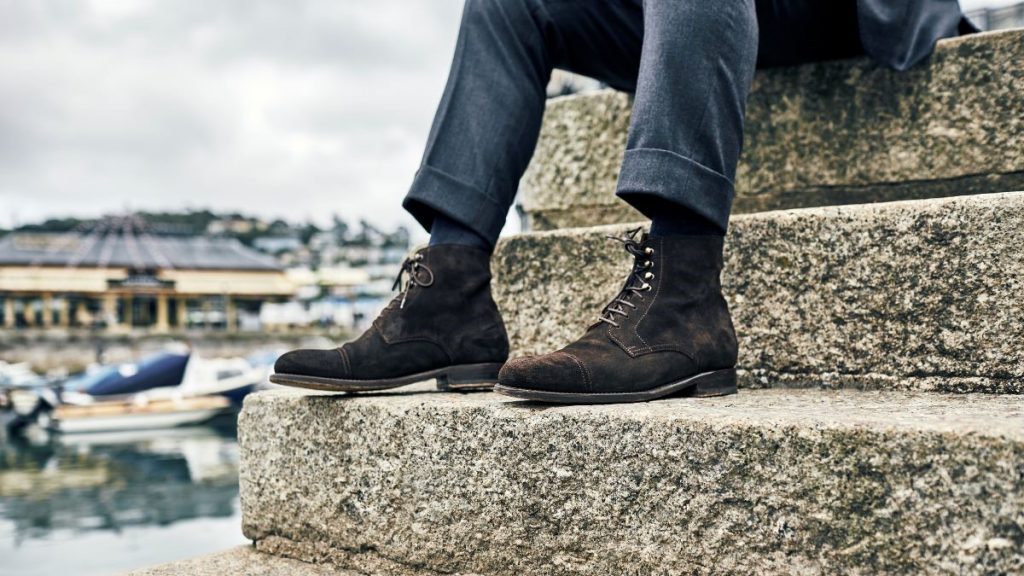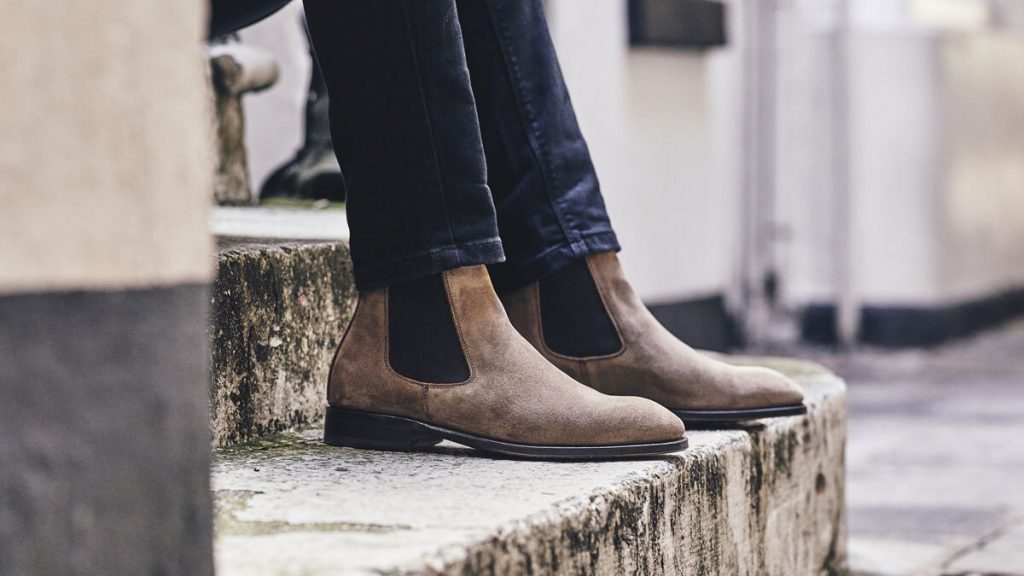Believe me, the headline of this Journal article is the tip of the iceberg! The word ‘suede’ is so easy to pun; almost as easy as the leather itself is to wear. With spring on its way – it is, I promise – we thought we would turn our attention to this lovely leather type…and throw in a few puns along the way.
To truly grasp your understanding of suede, it would be helpful to know the three different types of leather used in shoemaking.
- Full grain – this is the entire top layer of dense, tightly packed fibres of a hide and the softer, more pliable, corium layer underneath.
- Top grain – if you sand or buff the full-grain part of the hide from the top to get rid of any lumps and bumps, you would be left with the top grain.
- Split grain – is produced by splitting the full grain from corium layer. Both pieces of leather can be used for making shoes and both are considered genuine leather.
Suede is created using the latter process. In simple terms, suede is the underside of the leather. This makes it more delicate than a full-grain leather. By being more pliable and with a soft, shaggy texture, suede is a popular choice for clothing, bags, and gloves. Did you know that the term ‘suede’ comes from the French phrase, “gants de Suède”, which translates to “gloves from Sweden”?
Its suppleness also means suede footwear will shape to your feet quicker than a calf leather, so suede shoes or boots will feel uber comfortable sooner rather than later.

But all this malleability does not mean suede isn’t durable. This leather is tougher than people think! If you look after your suede shoes or boots properly, they can even be worn in winter weather and throughout the rest of the year.
So don’t be afraid of suede, especially with spring approaching. We think it works well in the office and as a leather type for a casual shoe. As you expect, we have all bases covered with suede versions of formal and dress-down footwear in both dark and light colours.
Has this journal article ‘suede’ your opinion on this leather type? Here are a few suggestions on how to wear it.
A brown suede shoe or boot brings out the best in blue jeans while, looking further ahead, a suede loafer looks great with shorts. Our new James loafer ticks both these boxes!
A blend of calf and suede can make your footwear really standout. Check out our new Clarence two-tone boots for a Sherlock Holmes vibe.
A suede chukka boot, like our Mustang, is a perfect daytime weekender while a Chelsea boot, such as the Cirencester, will take you through the evening.
You can browse our selection by typing ‘suede’ into our search site facility. Don’t forget to check out our sale section too.

How to look after suede shoes and boots
Lastly, here are some suede care tips from our customer service lead, Chris:
Step 1: Remove the laces (if you have any), so you do not get cleaner on them and can treat the area around the eyelet area.
Step 2: Brush off any loose dirt. We recommend a crepe or brass suede brush to brush out any dirt or marks. Simply brush against the pile lightly and work your way around the suede to focus on any dirty areas.
Step 3: Now you want to give your suede a good pampering, starting with a deep clean using something like Saphir suede cleaner. This cleaner doesn’t only cleanse, it brings life back into the suede and helps protect the suede from staining. Get a bowl of warm water and add the suede cleaner. Use 50/50 water and cleaner. You really do not need much. Use the brush provided and apply it against the pile. Once your suede has darkened down due to being wet, you have put enough on.
Step 4: You need to rinse the cleaner off for 5-10 minutes later with clean warm water. Just dip the brush into the clean water and brush the suede. Try to brush from lots of different angles to get the suede cleaner off. Do not worry if the suede looks darker; it’s because it is still wet.
Step 5: Leave your shoes or boots to dry. This takes around 20-30 minutes. You can put a cloth over the front to help soak up the excess moisture but DO NOT rub the suede with a cloth as any loose bits will come off and go onto the suede and ruin your good work.
Step 6: Once the suede has dried, it will look cleaner and more vibrant. Remove your shoe trees and re-lace your shoes.
No Comments